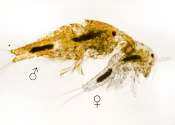Mothers can influence offspring's height, lifespan and disease risk through mitochondria
Mitochondria—the 'batteries' that power our cells—play an unexpected role in common diseases such as type 2 diabetes and multiple sclerosis, concludes a study of over 350,000 people conducted by the University of Cambridge.








